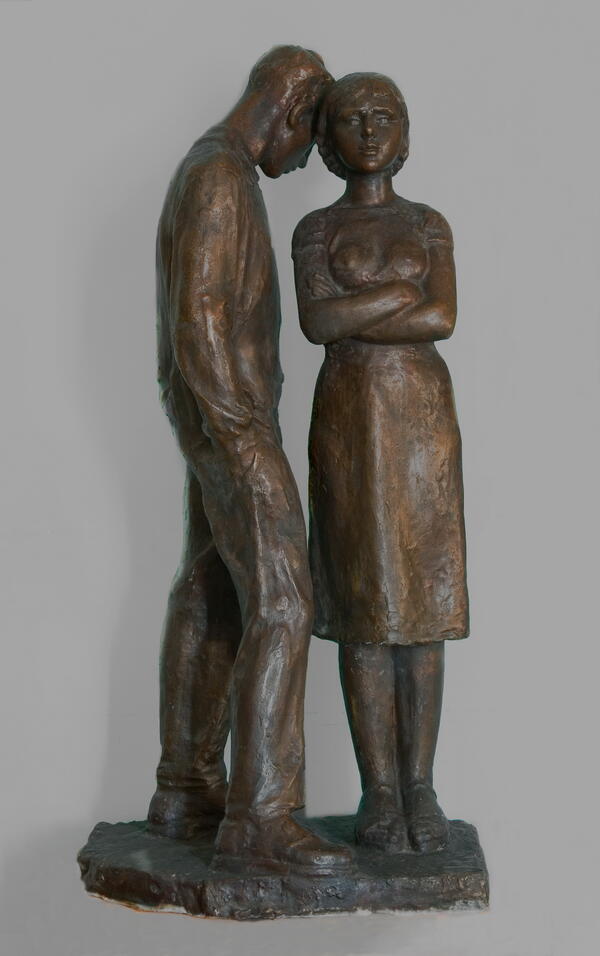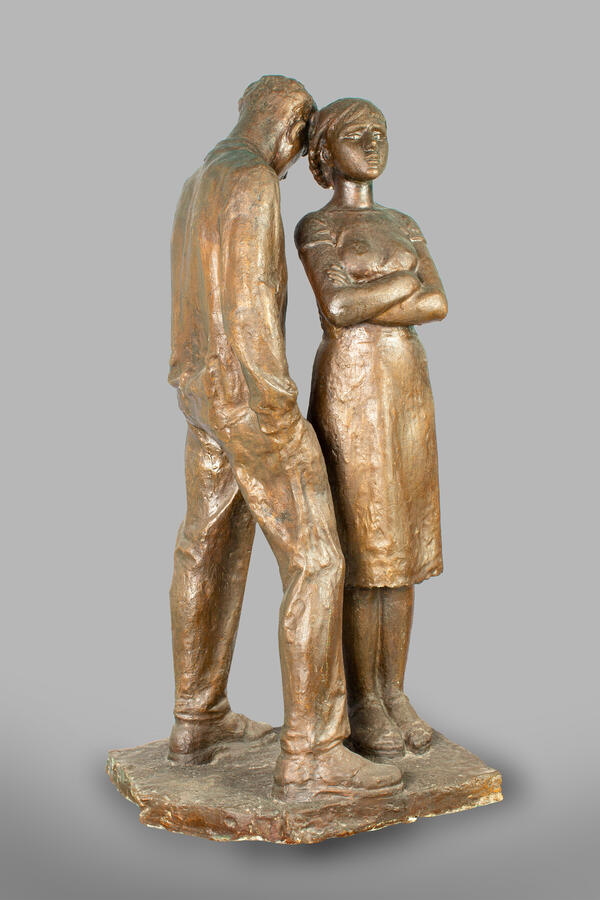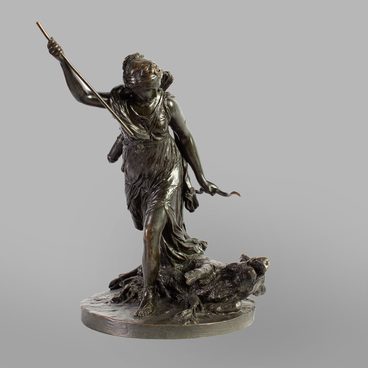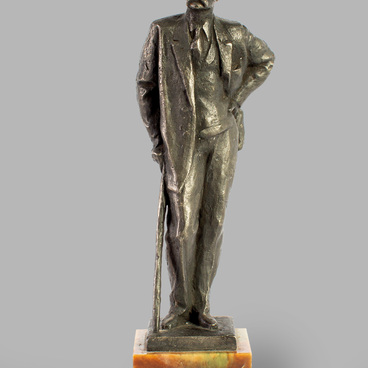The Tambov Regional Art Gallery houses the sculptural composition “Youth” by Leonid Lvovich Berlin. The work is distinguished by the expressiveness of the figures, the sculptor’s deep understanding of plastic art, and his ability to seamlessly unite the shapes into one composition. The forms are more generalized and lack detail.
Leonid Lvovich Berlin (1925–2001) was a Soviet and Russian nonconformist sculptor, painter, graphic artist, and book illustrator. In 2000, he became an Honored Artist of the Russian Federation.
The “Youth” is Berlin’s early work with classical forms, showing the influence of his teachers Alexander Terentyevich Matveyev (1878–1960) and Nikolay Vasilyevich Tomsky (1900–1984). In general, the works of that time are characterized by meticulous, scrupulous, and realistic approach, as well as attention to detail. In the late 1950s, the work of the sculptor Leonid Lvovich Berlin became a vivid example of the language of sculpture becoming freer. During that period, the artist took an active part in forming the “austere style” in art. This trend in realistic Soviet painting, which was popular at the turn of the 1960s, drew inspiration from the USSR fine arts in the pre-Stalin period of the 1920s and early 1930s. At the time, Berlin worked with metal, used the welding technique, and created kinetic sculptures. The schematic forms, acute distortion, and expressiveness of these works show that the sculptors ran counter to traditional Soviet sculpture. Berlin’s works are distinguished by the dramatic quality and intensity of the figurative structure. In 1961, Leonid Lvovich Berlin took part in the exhibition “of nine”, organized as a counter to the “Stalinist” academic style. Among other participants in the exhibition were Nikolay Andronov, Boris Birger, Pavel and Mikhail Nikonov, Mikhail Ivanov, Natalya Yegorshina, Kirill Mordvinov, Mariya Favorskaya, and Vladimir Weisberg.
The famous sculptor’s life journey can be described as tragic. His solo exhibition, organized in 1974, was sabotaged. At the exhibition, Berlin intended to show his works, made in the welding technique, for the first time. However, the exhibition was banned, and the sculptures were broken, taken out, and thrown over the fence of the sculptor’s dacha.
Leonid Lvovich Berlin (1925–2001) was a Soviet and Russian nonconformist sculptor, painter, graphic artist, and book illustrator. In 2000, he became an Honored Artist of the Russian Federation.
The “Youth” is Berlin’s early work with classical forms, showing the influence of his teachers Alexander Terentyevich Matveyev (1878–1960) and Nikolay Vasilyevich Tomsky (1900–1984). In general, the works of that time are characterized by meticulous, scrupulous, and realistic approach, as well as attention to detail. In the late 1950s, the work of the sculptor Leonid Lvovich Berlin became a vivid example of the language of sculpture becoming freer. During that period, the artist took an active part in forming the “austere style” in art. This trend in realistic Soviet painting, which was popular at the turn of the 1960s, drew inspiration from the USSR fine arts in the pre-Stalin period of the 1920s and early 1930s. At the time, Berlin worked with metal, used the welding technique, and created kinetic sculptures. The schematic forms, acute distortion, and expressiveness of these works show that the sculptors ran counter to traditional Soviet sculpture. Berlin’s works are distinguished by the dramatic quality and intensity of the figurative structure. In 1961, Leonid Lvovich Berlin took part in the exhibition “of nine”, organized as a counter to the “Stalinist” academic style. Among other participants in the exhibition were Nikolay Andronov, Boris Birger, Pavel and Mikhail Nikonov, Mikhail Ivanov, Natalya Yegorshina, Kirill Mordvinov, Mariya Favorskaya, and Vladimir Weisberg.
The famous sculptor’s life journey can be described as tragic. His solo exhibition, organized in 1974, was sabotaged. At the exhibition, Berlin intended to show his works, made in the welding technique, for the first time. However, the exhibition was banned, and the sculptures were broken, taken out, and thrown over the fence of the sculptor’s dacha.




